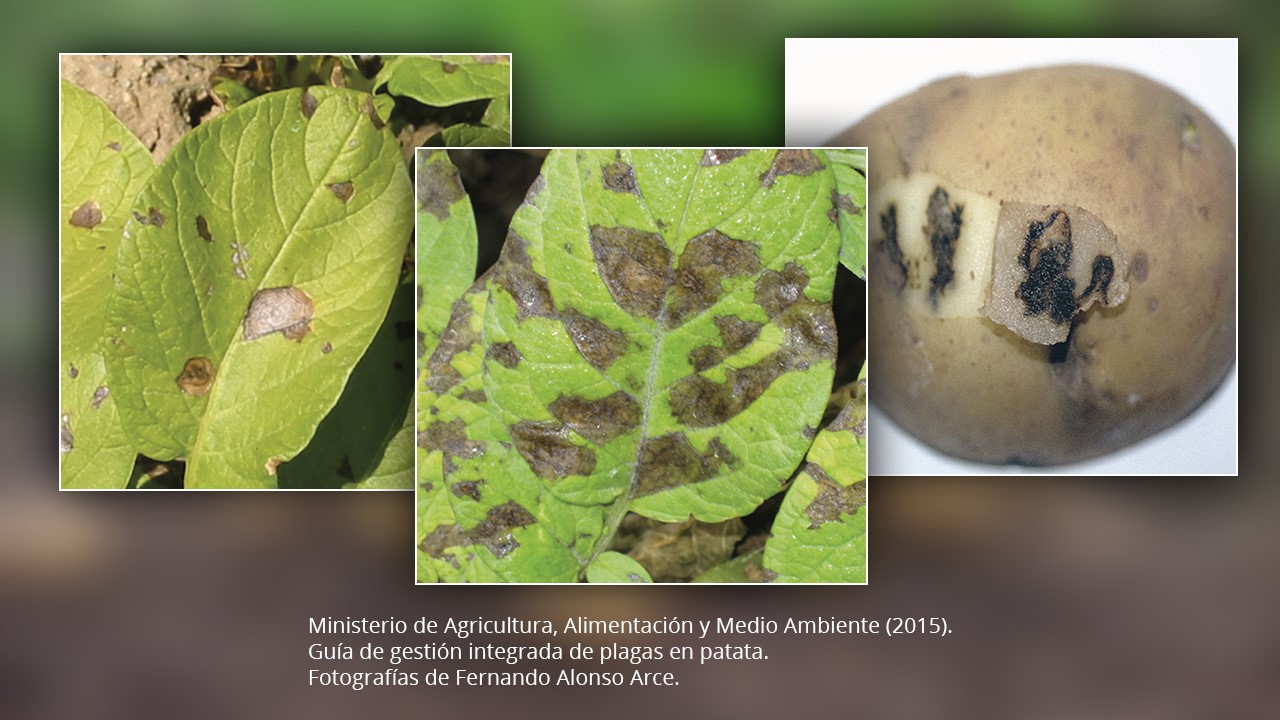Alternaria or early blight in potato: identification and control strategies

Symptoms and damage of alternaria (early blight) on potato. Photographs by Fernando Alonso Arce.
Early blight in potato (Alternaria solani) is, along with mildew, one of the most significant diseases affecting this crop. In order to combat it, first it is important to know which conditions and parameters give rise to and favour the development of this pathogen. And it is here where the control tools available to producers also come into play. Septum is a natural solution with a fungicidal action developed by Seipasa based on Equisetum arvense extract, which provides a powerful preventive and curative effect for controlling potato diseases.
Of all the diseases affecting potatoes early blight is particularly damaging to the plant, as it causes reduced activity and in turn less yields. Among the factors that can cause the disease to appear, and which should be part of the farmer's alert system, are climatic conditions.
Early blight in potato is more likely to occur in zones with high ambient humidity and high temperatures. The guide to integrated pest management in potato, published by the Spanish Ministry of Agriculture cautions that the disease develops more quickly in periods of alternating wet and dry conditions. The risk is even higher when there are several consecutive days of morning dews. In colder zones and with later varieties, infections by this fungus are rarer.
When the first symptoms of early blight in potato (Alternaria solani) appear, Seipasa recommends applying Septum, a powerful natural solution with a fungicidal action developed from a select combination of phenol molecules, saponins, flavonoids and silicic acid obtained from Equisetum arvense extract which, isolated and in a balanced proportion give the product its extremely high efficacy.
Solutions for treating early blight in potato
Septum is effective right from the outset of the disease as it has both a preventive and curative effect. It produces the breakdown and dehydration of fungal tissues and interrupts sporulation of fungi.
Septum is also an excellent alternative for use in resistance management. It can be applied the day before harvesting as it does not leave chemical residues on crops. It is an aid that is compatible in organic farming, IPM and conventional production strategies.
Seipasa also has the advantage of the extensive in-house knowledge it has developed in relation to this product, thanks to the identification of the more than 90 different botanical molecules it comprises, allowing the selection and extraction of the best of each active substance to ensure the product's maximum efficacy in all types of conditions of application.
Preventive measures to be taken into account
Early blight in potato is a fungus that can survive from one season to another in the soil, in plant remains, infected tubers or other hosts. Rain or wind can contribute to disseminating the inoculum so that it is advisable to eliminate plant waste after harvesting.
Protect crops from stress-causing factors, harvest at the right time, use certified pathogen-free seeds and choose the appropriate variety in terms of resistance and susceptibility to disease are further recommendations to bear in mind in strategies for preventing and controlling early blight in potato.
Disease alert systems
As always in these cases it is essential to have an alert system that enables farmers to identify the first symptoms of disease, and which helps them to decide if treatment is necessary or not. Early blight in potato tends to occur in more advanced crop cycles. The symptoms appear as small spots on the leaves in the form of concentric rings that darken as they grow. The infection tends to start on the leaves nearest to the soil, which are the oldest.
Early blight in potato does not tend to attack the tuber although it can infect it through wounds caused during harvesting. Symptoms on infected tubers appear as dark-coloured sunken lesions with slightly raised borders. Although the tuber does not rot, the deterioration caused is quite evident.



